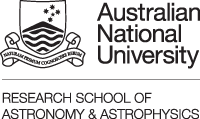HD-2: Nonlinear Unmixing of Hyperspectral Data
Paul Gader and Rob Heylen
Abstract:
The tutorial will cover the theory and algorithms involved in nonlinear spectral unmixing. Significant research efforts have been focused on the linear unmixing problem. Far fewer algorithms have been developed for unmixing nonlinear mixtures. This tutorial will begin with a very brief review of linear mixing and associated unmixing algorithms. The focus will quickly change to nonlinear unmixing algorithms. Algorithms that are based on physical models and those that are based on data driven methods will be described, compared, and contrasted. In the context of physical models, multiple bilinear mixing models will be described as well as intimate mixing models. Illustrative examples based on synthetic data generated to test algorithms will be discussed. Results on real-data will also be investigated.
Biography:
Paul Gader received his Ph.D. in Mathematics for image processing related research in 1986 from the University of Florida. He has worked as a Senior Research Scientist at Honeywell's Systems and Research Center, as a Research Engineer and Manager at the Environmental Research Institute of Michigan (ERIM), and as a faculty member at the University of Wisconsin - Oshkosh, the University of Missouri - Columbia, and the University of Florida, where he is currently a Professor and Interim Chair of Computer and Information Science and Engineering. He performed his first research in image processing in 1984 when he worked on algorithms for detection of bridges in Forward Looking Infra-Red (FLIR) imagery as a summer student fellow at Eglin AFB. His dissertation research focused on algebraic methods for developing parallel algorithms for image processing. He has since worked on many theoretical and applied research problems in the fields of fast computing with linear algebra, morphological image analysis, fuzzy sets and Bayesian methods in machine learning and pattern recognition, handwriting recognition, automatic target recognition, bio-medical image analysis, landmine detection, human geography, and hyperspectral and LiDAR image and signal analysis. Professor Gader has published over 80 refereed journal and hundreds of conference papers, is an Associate Editor of the IEEE Geoscience and Remote Sensing Letters, the chair of the Geoscience and Remote Sensing Society Standardized Algorithm, Date, and Evaluation working group, is a University of Florida Research Foundation Professor, and a Fellow of the IEEE.


 IGARSS13
IGARSS13 @IGARSS2013
@IGARSS2013













